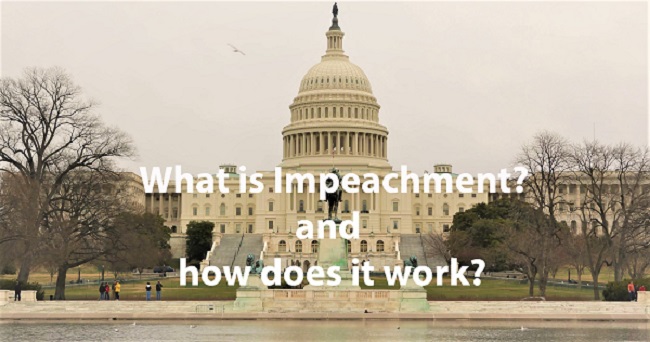Impeachment is a process were leaders are fired or removed from the government office. Impeachment does not in itself remove the government official from office. It is similar to prosecution in Criminal law, which could end in conviction. Where a governing body accuses and investigates how a leader has misused their position and powers. Impeachment allowing parliamentary to vote for removing accused government officials from office. Impeachment originated in England near the 19th century.
In the United States of America for example impeachment at the federal level is restricted to those who may have committed Bribery, Treason, and other higher crime. Impeachment law exists in many countries around the world, like France, Brazil, India, Russia, Ireland, The Philippine, South Korea, Germany, and The United States. But here we’re focusing on the United States of America Impeachment law.
How Impeachment Work In The United States
Impeachment is possible both at the state and federal levels, any elected official may be impeached. Here we only discuss how impeachment works for the highest office in the land, the president of the United States. There are only 4 ways to remove a US President from there office during their term.
The First Way
If the president can pass away. Till now eight US presidents have died while in office, four of those deaths occurred through assassination. The first incumbent president to die was William Henry Harrison in 1841, who died after only a month in office. He was followed by Zachary Taylor in 1850. Abraham Lincoln was assassinated in 1865, followed by James A. Garfield, who was assassinated in 1881. William McKinley was also assassinated in 1901 and Warren G. Harding suffered a heart attack while in office, and died in 1923. Franklin D. Roosevelt died in 1945 and finally, John F. Kennedy was assassinated in 1963.

The Second Way
The president can be impeached, convicted and removed. In this reference, a simple definition of impeachment is that the House of Representatives makes some ceremonious charges against the president for-to quote the constitution “Treason, Bribery, or other high Crimes and Misdemeanors.” But when the people think about impeachment they mean the entire process, including conviction and removal from office, in fact, it means some kind of allegations of crime.
Impeachment is just the starting process for reviewing a president’s actions and determining if those actions fit the clauses outlined in the constitution. Much like a grand jury prosecution an alleged criminal, impeachment starts a process in motion to review and investigate the president’s actions. In US history, not a single US president has ever been removed from office through impeachment. But there are three presidents that have come close. Three presidents have been impeached, President Andrew Johnson, President Bill Clinton, and President Donald Trump.
The Third Way
The American president can leave office during their term is to resign. Till now there only one president has ever resigned in the history of the US. Contrary to popular notion, President Richard Nixon resigned before the House of Representatives could vote on the Articles of Impeachment they had drafted against him. President Richard Nixon was not removed from office, he resigned in 1974.

The Fourth Way
The president can be removed from office is if the 25th amendment is invoked. Under the 25th amendment, there are two methods in which the president may either temporarily or permanently be absolved of power. Firstly, the President can provide the leaders of the Senate and House of Representatives with a written declaration stating that they are unable to discharge the powers and duties of their office. Once the declaration has happened, the Vice President assumes all powers and duties as Current President unless the President provides another written statement declaring that they are ready to resume their duties.
An example of this law in action would be in 2002 when President George W. Bush temporarily assigned power to Vice President Dick Cheney when he undergoes a medical procedure. Section 4 of the 25th amendment discusses the second means of either temporarily or permanently removing the president from office if the Vice President and a most of cabinet members provide the leaders of the Senate and House of Representatives with a written declaration that the President is incapable to discharge the powers and duties of their office, the Vice President can immediately suppose the powers and duties of the office as Current President.

If the President responds with their own written declaration that no inability exists, they can resume the powers and duties of their office. Then within 4 days if the Vice President and cabinet members send a second declaration that the President is unfit for duty, the Vice President again immediately takes over as Acting President. Then Congress must meet within 48 hours regarding this issue. Within 21 days, Congress must vote to permanently remove the president from power.
If two-thirds of members of both the House of Representatives and the Senate agree that the President is unworthy for office, they are permanently stripped of the position, and the Vice President officially becomes President. This clause is for removing power from the President if they suffer from health-related problems and cannot or will not provide Congress with a written declaration. Currently, this option has never been utilized in US history.
How Impeachment does work
If the President has done some questionable things that the House of Representatives feels they should examine. The Judiciary Committee of the House opens an investigation into the President’s actions. Eventually, the Judiciary Committees’ report is enough to stranglehold several members of the House that President should be impeached so that they



